#ux trends
Explore tagged Tumblr posts
Text
Businesses eagerly adopt the latest UI design trends for 2024. In today's digital landscape, nearly half of the countless websites and apps get abandoned by users.
The global UI Design market, valued at USD 4454.74 million in 2022, is expected to reach approximately USD 9952.51 million by 2028 with a significant 14.34% CAGR.
The driving force behind this trend is the desire to provide a superior user experience. Users often leave a site due to poor user experience or an unfamiliar UI/UX design.
Let's explore Top trends in this blog...
#ui ux design#designer#ui designer#ux design#ux designer#web design#ui ux development services#ui trends#trends#ui ux trends#ux trends#troothemes#graphic design
5 notes
·
View notes
Text
How to Choose the Right UI/UX Design Agency for Your Project
Selecting the perfect UI/UX design agency is a critical step in ensuring the success of your digital project. A well-designed user interface and user experience can significantly enhance user engagement, drive conversions, and bolster your brand identity. Here's a guide to help you navigate this important decision and find the ideal partner for your needs.
1. Understand Your Project Requirements
Before you begin your search, clearly define your project's goals, scope, and budget. Are you launching a mobile app, redesigning a website, or creating an entirely new platform? Knowing your requirements will help you communicate effectively with potential agencies and ensure alignment.
Key Considerations:
Target audience and user personas
Project timeline and milestones
Desired features and functionalities
2. Look for Relevant Experience
An agency's portfolio is a window into their expertise. Examine their previous projects to assess their experience in your industry or with similar project types. Look for case studies and testimonials that showcase their problem-solving skills and innovative designs.
Tip:
For specialized services, consider agencies with proven expertise. For example, Ynodesigns offers comprehensive solutions with experienced UX UI designers who understand diverse project requirements.
3. Evaluate Their Design Process
A transparent and structured design process is essential for delivering high-quality results. During your discussions, ask about their approach to:
User research and analysis
Wireframing and prototyping
Usability testing and feedback integration
This will give you insight into how they handle challenges and ensure a user-centered design.
4. Check Their Technical Capabilities
UI/UX design isn’t just about aesthetics; it’s also about functionality and performance. Make sure the agency is familiar with the latest design tools, technologies, and trends. Additionally, they should have a deep understanding of responsive design, accessibility standards, and performance optimization.
5. Assess Communication and Collaboration
Effective communication is key to a successful partnership. Choose an agency that prioritizes regular updates, listens to your feedback, and collaborates closely with your team. A reliable UI UX design agency like Ynodesigns ensures seamless communication throughout the project.
6. Review Their Pricing and Value Proposition
While budget constraints are important, the cheapest option isn’t always the best. Focus on value over cost by considering what the agency brings to the table. High-quality design is an investment that pays off in the long run.
Questions to Ask:
What’s included in their pricing?
Do they offer post-launch support?
Can they scale their services as your project grows?
7. Request a Trial or Initial Consultation
Many agencies offer free consultations or small trial projects. Use this opportunity to gauge their understanding of your requirements, their creative approach, and their responsiveness.
Conclusion
Choosing the right UI/UX design agency is a decision that can shape the success of your project. By carefully evaluating your options, focusing on expertise, and prioritizing communication, you can find an agency that aligns with your vision. Partnering with experts like Ynodesigns ensures your project not only meets but exceeds expectations, delivering a seamless and engaging user experience.
#UI/UX design agency#choosing a design agency#UX/UI designers#Ynodesigns#UI/UX design tips#finding a design agency#user experience design#user interface design#hiring a design agency#design process#UI/UX portfolio#design agency communication#design agency pricing#responsive design#usability testing#digital project design#UX trends#UI trends#project collaboration#accessibility standards
1 note
·
View note
Text
WHAT is the ding dong dang deal with modern apps & web pages making scroll bars so tiny?? Or even invisible until you hover over/near them?
Not everybody is on a touch screen, yo.
22 notes
·
View notes
Text
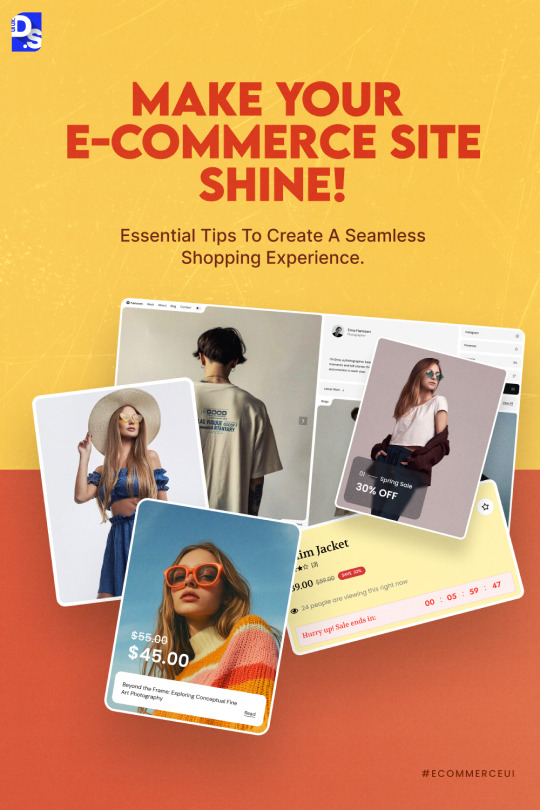
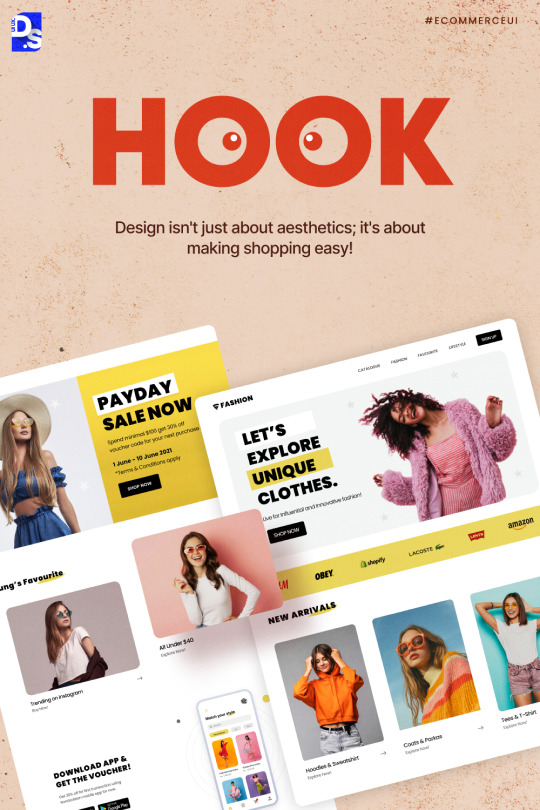
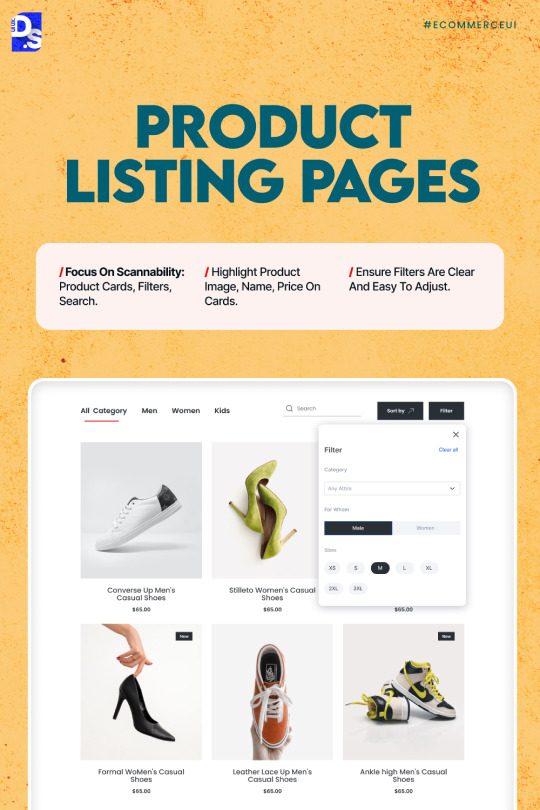
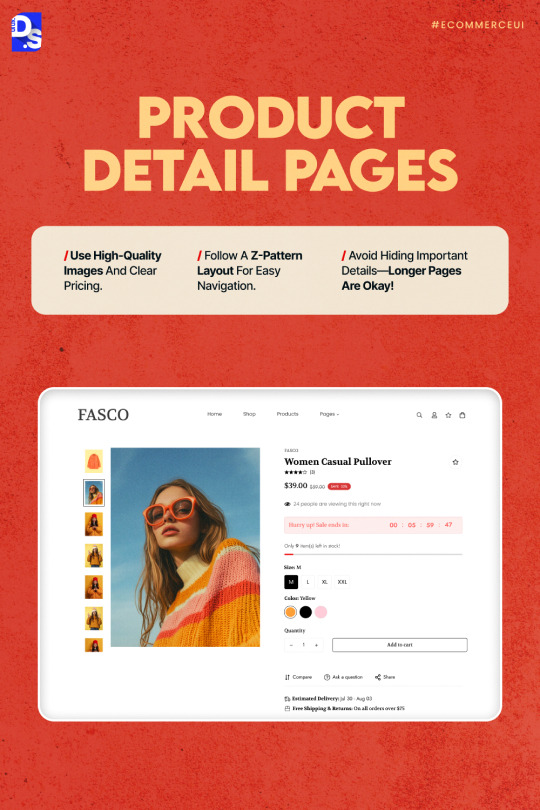
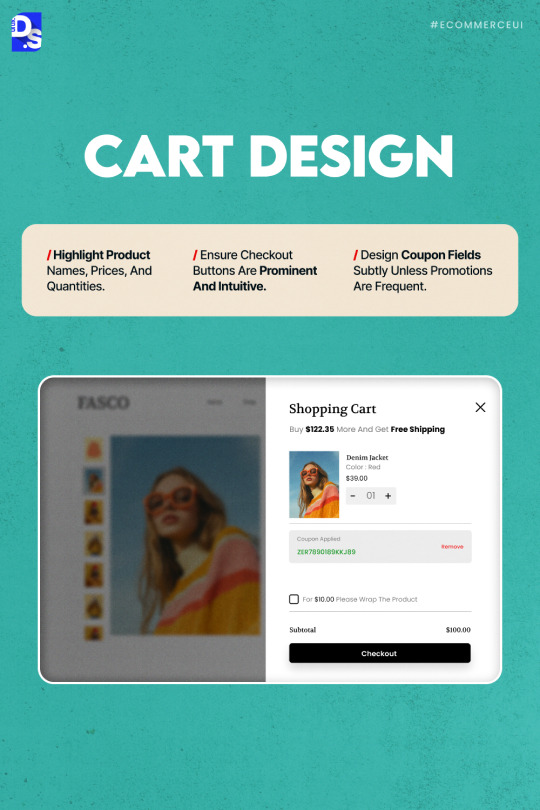
Want to boost sales on your e-commerce site? 🎯 Designing a great shopping experience is key! Check out these top tips for product listing pages, detail pages, and cart designs.
Let your users shop with ease!
5 notes
·
View notes
Text
Create, code, and bring to life,
Immersive worlds, and digital strife.
Join the quest, and make your mark,
In game development, and design's spark!
#GameDevelopment #GameDesign #IndieGames #GamingCommunity #3DModeling #CGI #GameArt #DevLife

#games#development#game video#game design#game creation#2d game#unity game#unreal engine game#card game design#fighting game community#puzzle games#Lego games#ux design#trending card game#trending game#board design#board game#coding#testing#game testing#animation game#game character#game illustration
2 notes
·
View notes
Text
As someone who doesn’t use Twitter and hasn’t used it since 2016, at this point I feel like every even slightly Twitter-esque (let alone overt Twitter-esque) design choice Tumblr makes gets yelled about because People Really Just Fucking Hate Twitter whether they realise it or not.
Which, like. Fair ‘nuff. I also hate Twitter, which is why I don’t use it. But nobody ever really gives these design decisions any time to percolate on this site in favour of kneejerk “they changed it and we hate it” reaction. Public likes are not new. Multiple tabs on a dashboard (some of them not things you opted into seeing) are not new. Having to block ads with external tools is not new (and it’s a big deal that photomatt said the words “ad blocker”, like, you couldn’t get that shit on any other profit-driven site, everyone is too scared for their precious monetisation)
The new sidebar, also, I think is pretty ugly right now but it’s probably going to go through a few iterations. I, personally, really wish they’d put the search bar literally anywhere else (maybe group search and discovery together IDK I’m not an UX designer) and I think accessing sideblogs has been too complicated for a while now, but none of those are the same as “this looks like The Other Blue Site”.
Like I’m not a graphic designer. I am certainly not a fucking UX designer, and I think those people are either all nuts or all geniuses. I’m pretty sure the new layout is being extensively heatmapped rn, and what changes it’ll undergo are gonna be done based on that, based on comments that are along the lines of ‘this change would make me more productive’ and less on “WEEEEEH CHANGE IT BACK CHANGE IT BACK CHANGE IT BACK”.
Your animosity towards change is not meaningful user experience information. You misclicking on shit more *is*. If this layout is really *that* bad and terrible, Automattic’s research tools will demonstrate it as such. The developers now are actually much better versed in Web 2.0 design, for better and for worse.
#van stuff#Also like yes I also hate the touchscreenification of desktop sites#as someone who does not have and does not want a touch screen computer#but that's not a design trend I get to dictate as I am in fact a minority user for this site#and the complaints I am tired of seeing are also coming from other legacy minority users of desktop#There are many good UX reasons to opt for a vertical layout instead of a horizontal one#and I think the majority reason is so that people who are on mobile and desktop simultaneously don't have to have two different brainmaps#for their muscle memory on this site#but like... the vertical sidebar is not the same as 'randomly swapping 'Close' and 'Post'' lol#the top of the screen horizontal bar still does things and there's way less empty space there now#and I get wanting negative space and less screen clutter#like... that's the ONE criticism of this update I can agree with#but that's STILL NOT THE SAME as 'arbitrarily fucking over the muscle memory of EVERY site user'#how many people on this site *ever* move out of their dashboard? I know I do!#but I think it's the minority of people considering the user-curated model of propagation this site is still#*actively* promoting#This site looking superficially more like twitter doesn't change that!#like the sky is not falling call me when they eliminate the ability to browse the tags in favour of a flat search#AGAIN#remember when we had that? Remember how *BAD* it was?#remember how much easier finding stuff became when we got 'browse tags' back as the default search?
11 notes
·
View notes
Text

In a world where digital innovation leads the way, the key to success lies in understanding your users. 🚀 UX audits are more than just a checklist; they're a journey to the heart of your product's experience. Let's embrace this path and transform our digital offerings. Together, we can create products that don't just exist but genuinely resonate.
#ux#design#audit#digital products#user experience#productdesign#digital transformation#business#trends#mobiosolutions#uk
3 notes
·
View notes
Text
🌟 Hello Tumblr Community! 🌟
I'm excited to announce that I'm new to Tumblr, and I can't wait to dive into this vibrant platform! 🚀
Over the coming days, I'll be exploring the amazing world of Tumblr, getting to know all of you, and sharing my thoughts and interests. 🤗
To kick things off, I wanted to share my first discovery – some fantastic blogs that focus on UI/UX trends and the latest updates. As someone deeply passionate about Experience design and development, these blogs hold a special place in my heart:
Pepper Square: This blog is a treasure trove of UI/UX inspiration, offering insightful articles and stunning visuals. It's a must-follow for anyone in the UI/UX design field like me.
Growth Design: Stay updated on the newest design trends and get tips on creating user-friendly interfaces.
Nielsen Norman Group: Dive into the world of interactive design with this blog, which features interactive prototypes and innovative ideas.
Built for mars: For in-depth analysis of UX case studies and usability testing, look no further.
UX Planet: Explore the intersection of design and psychology for a deeper understanding of user behavior.
Feel free to drop by and say hi, and if you have any recommendations or tips for a Tumblr newcomer like me, I'd love to hear them! Let's connect, share, and inspire each other. 🌈✨
Here's to a fantastic journey on Tumblr! 🎉👋
#NewToTumblr #UIUX #DesignTrends
5 notes
·
View notes
Text
E-commerce SEO Strategies Unveiled: Boosting Sales and Visibility
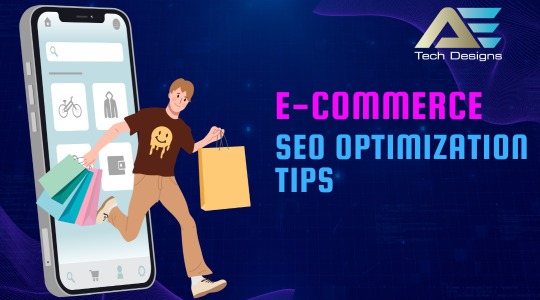
In the ever-evolving landscape of e-commerce, staying ahead of the competition requires not only a compelling product but also a well-optimized online presence. In this comprehensive guide, we will delve into the world of E-commerce SEO optimization. No buzzwords, just actionable insights to enhance your online store's visibility and boost sales. Let's get started
Understanding the Basics
To lay a solid foundation, let's start with the basics. E-commerce SEO optimization involves a series of on-page and off-page strategies aimed at improving your website's ranking on search engine results pages (SERPs). This optimization is pivotal for attracting high-quality organic traffic, increasing sales, and staying competitive in the digital marketplace.
Keyword Research
The cornerstone of any successful SEO campaign is thorough keyword research. Begin by compiling a list of relevant keywords that reflect your products, services, and industry. In addition to your primary keywords, consider long-tail keywords, as they often have less competition and can yield highly targeted traffic. For instance, if you're a digital marketing agency in Seattle, keywords like "digital marketing services in Seattle" and "Seattle SEO company" are goldmines.
On-Page Optimization
High-Quality Content: Your website's content should not only be unique but also provide value to your audience. Craft product descriptions, blog posts, and landing pages that resonate with your target audience. Incorporate the primary and long-tail keywords naturally within the content while maintaining readability and a professional writing style.
Page Titles and Meta Descriptions: Ensure that each page has a unique and descriptive title tag and meta description. These elements should include relevant keywords and provide a concise summary of the page's content. This encourages users to click through to your website from the search results.
Header Tags: Use header tags (H1, H2, H3, etc.) to structure your content. This not only improves readability but also helps search engines understand the hierarchy of information on your pages.
User Experience (UX) Matters
Google values user experience, so make sure your website is user-friendly. Optimize for mobile devices, improve page load times, and ensure intuitive navigation. A seamless UX not only pleases visitors but also satisfies search engine algorithms.
Backlink Building
Off-page SEO is as crucial as on-page optimization. Seek high-quality backlinks from reputable websites in your industry. Guest posting, influencer collaborations, and participating in industry forums can all help in this regard.
Monitoring and Analytics
Track your SEO efforts using tools like Google Analytics and Google Search Console. Regularly review your website's performance, make necessary adjustments, and stay updated on SEO trends and algorithm changes.
Conclusion:
In the ever-competitive world of e-commerce, mastering SEO optimization is your key to success. By adhering to these strategies and tips, you can enhance your website's visibility, drive organic traffic, and ultimately boost your sales. If you're seeking expert assistance, consider partnering with AE Tech Design Agency, your trusted SEO company in Seattle. Contact us today to explore how our digital marketing services can elevate your online presence and drive meaningful results.
Remember, the world of SEO is constantly evolving, so staying informed and adapting your strategies accordingly is essential for long-term success.
#E-commerce SEO#SEO Optimization#E-commerce Strategies#SEO Tips#Organic Traffic#Search Engine Rankings#Keyword Research#On-Page SEO#Off-Page SEO#User Experience (UX)#Backlink Building#Local SEO#Google Analytics#Digital Marketing#SEO Trends#SEO Algorithm#Online Visibility#Website Performance#SEO Company#Seattle Digital Marketing
5 notes
·
View notes
Text
The Evolving Landscape of SEO: A Year of Transformations in Google's Algorithms and Beyond
Introduction: As a seasoned SEO professional, I have closely observed the dynamic nature of search engine optimization and the ever-changing algorithms employed by Google. Over the past year, the SEO industry has witnessed significant transformations that have reshaped the way websites design services are ranked, the appearance of search engine results pages (SERPs), the prominence of local SEO, and the integration of AI in SEO strategies. In this article, I will outline the top 10 changes in SEO and Google, highlighting the key insights and trends that have emerged during this transformative period.
Algorithm Updates:
Google's algorithm updates have always been a focal point for SEO professionals, and the past year has been no exception. From the introduction of Core Web Vitals as a ranking factor to the continuous refinement of algorithms like BERT and RankBrain, Google has been on a mission to provide users with more relevant and high-quality search results.
SERP Enhancements:
Google has been constantly refining the appearance of its SERPs to enhance user experience and provide more contextually relevant information. Features like featured snippets, knowledge panels, and local packs have become more prominent, leading to a shift in SEO strategies towards optimizing for these rich results.
Rise of Zero-Click Searches:
With the growing prevalence of featured snippets and rich results, there has been an increase in zero-click searches, where users find the information they need directly on the SERP without clicking through to a specific website. This trend has necessitated a shift in SEO focus towards optimizing content for visibility in featured snippets to maintain organic traffic.
Mobile-First Indexing:
Google's mobile-first indexing initiative reached a significant milestone over the past year, with mobile versions of websites websites design services becoming the primary basis for indexing and ranking. This shift has emphasized the importance of mobile optimization, responsive design, and fast-loading pages in SEO strategies.
Core Web Vitals:
Google's introduction of Core Web Vitals as a ranking factor has underscored the significance of user experience metrics like page speed, interactivity, and visual stability. SEO professionals are now paying closer attention to factors that directly impact the user's website experience, emphasizing the need for optimizing performance and enhancing overall website usability.
Local SEO Dominance:
The past year has seen a further rise in the importance of local SEO, driven by increased user reliance on local search for finding products and services. Google My Business (GMB) optimization, local citations, and the prominence of map packs have become critical elements in local SEO strategies, providing businesses with an opportunity to target specific geographical areas.
E-A-T and Content Quality:
Google's focus on expertise, authoritativeness, and trustworthiness (E-A-T) has continued to shape SEO practices, with an emphasis on producing high-quality, authoritative content. Websites that demonstrate expertise and provide trustworthy information are more likely to rank higher in search results, making E-A-T an essential consideration in content creation and optimization.
Voice Search and AI:
The integration of AI-powered voice assistants, like Google Assistant and Amazon Alexa, has had a profound impact on SEO. Optimizing for voice search and conversational queries has become crucial, as search engines strive to understand natural language patterns. SEO professionals are now adapting their strategies to align with the nuances of voice-based search and provide users with concise, contextually relevant answers.
User Intent Optimization:
Understanding and fulfilling user intent has become a fundamental aspect of SEO. Google's algorithms are becoming increasingly adept at deciphering user intent, and websites that align their content to match user expectations are rewarded with higher rankings. SEO professionals now focus on creating content that satisfies specific user queries and intents, driving more targeted organic traffic.
Machine Learning and RankBrain:
Google's RankBrain algorithm, which utilizes machine learning to process search queries and improve search results, has continued to evolve. SEO professionals are now harnessing the power of machine learning to gain insights, identify patterns, and refine their strategies. Advanced SEO tools and techniques powered by AI are becoming indispensable for effective keyword research, competitor analysis, and overall SEO performance.
Conclusion: The past year has been transformative for SEO, with Google's algorithm updates, changes in SERP appearance, the rise of local SEO, the integration of AI, and the evolving understanding of user intent. To stay ahead in this ever-evolving landscape, SEO professionals must continually adapt their strategies, optimize for mobile and user experience, prioritize local search, and leverage AI-powered tools. By embracing these changes and keeping a keen eye on emerging trends, SEO practitioners can thrive in the dynamic world of search engine optimization.
#SEO#Google Algorithms#Search Engine Optimization#SEO Trends#Digital Marketing#Google Updates#SEO Strategies#Algorithm Changes#SEO Best Practices#Website Optimization#SERP (Search Engine Results Page)#Organic Traffic#Content Marketing#SEO Techniques#Keyword Research#Link Building#Mobile SEO#Voice Search Optimization#User Experience (UX)#SEO Analytics
6 notes
·
View notes
Text
#Web Design Trends#AI Tools#Technology Trends#AI in Web Design#Artificial Intelligence#User Experience#Digital Marketing#UX Design#Responsive Design
0 notes
Text
How Custom Software Development Transforms Modern Businesses: Insights from CodEduIn an era dominated by rapid technological advancements, businesses are under immense pressure to stay competitive, efficient, and customer-focused. Off-the-shelf software, while useful, often falls short in addressing the unique challenges and dynamic needs of individual businesses. This is where custom software development steps in—a solution tailored specifically to meet the requirements of a business.
CodEdu Software Technologies, based in Cochin, Kerala, specializes in creating innovative, customer-centric software solutions that empower businesses to streamline operations, improve productivity, and enhance customer experiences. In this blog, we’ll explore how custom software development is transforming modern businesses and why partnering with CodEdu can be a game-changer.
What Is Custom Software Development? Custom software development involves designing, developing, and deploying software solutions tailored to meet a business's specific requirements. Unlike generic, off-the-shelf software, custom solutions are built from the ground up to align with a company’s processes, goals, and challenges.
This personalized approach allows businesses to create tools that integrate seamlessly with their existing operations, enhancing efficiency and providing a competitive edge.
The Key Benefits of Custom Software Development
Tailored to Specific Business Needs Custom software is designed to address a company’s unique requirements. Whether it’s automating a workflow, integrating with other tools, or solving specific challenges, the solution is built to fit seamlessly into the business ecosystem.
For example, an e-commerce business may require a software system that combines inventory management, personalized customer recommendations, and a secure payment gateway. Off-the-shelf software may provide one or two of these features but rarely all in an integrated manner.
Enhanced Efficiency and Productivity Custom software eliminates redundancies and streamlines operations. By automating repetitive tasks and integrating seamlessly with existing tools, businesses can significantly reduce manual effort and focus on core activities.
CodEdu has worked with several businesses to create custom solutions that enhance efficiency. One notable example is a manufacturing client who needed real-time tracking of production cycles. The tailored solution reduced delays and optimized resource allocation, saving the client both time and money.
Scalability for Future Growth One of the major limitations of off-the-shelf software is its inability to scale. As businesses grow and evolve, their software needs change. Custom software, on the other hand, is designed with scalability in mind.
CodEdu’s solutions are built to grow alongside businesses, allowing for easy updates and additional features as new challenges and opportunities arise.
Improved Security Data security is a top concern for businesses today. Custom software allows for the integration of advanced security features tailored to the specific vulnerabilities of the organization.
Unlike generic solutions that use standard security protocols, custom software incorporates unique safeguards, making it harder for malicious actors to breach the system.
Cost-Effectiveness in the Long Run While the initial investment for custom software may be higher than purchasing off-the-shelf solutions, it offers significant savings in the long run. Businesses avoid recurring licensing fees, third-party tool integration costs, and inefficiencies caused by mismatched software capabilities.
Real-World Applications of Custom Software Development Custom software development is revolutionizing industries by offering solutions that address specific operational challenges. Here are some examples of how businesses are leveraging tailored solutions:
E-Commerce Industry E-commerce companies face unique challenges, such as managing large inventories, providing personalized customer experiences, and ensuring secure transactions. Custom software can integrate inventory management systems, CRM tools, and AI-driven recommendation engines into a single platform, streamlining operations and boosting sales.
Healthcare Sector The healthcare industry requires solutions that ensure patient confidentiality, streamline appointment scheduling, and manage medical records efficiently. Custom software allows healthcare providers to deliver telemedicine services, maintain compliance with industry regulations, and improve patient outcomes.
Education and Training Educational institutions and training academies are leveraging custom Learning Management Systems (LMS) to provide personalized learning experiences. CodEdu has developed platforms that enable online assessments, real-time feedback, and interactive learning tools for students.
Logistics and Supply Chain Logistics companies require software that provides real-time tracking, route optimization, and automated billing. CodEdu has partnered with logistics providers to build solutions that reduce operational costs and enhance customer satisfaction.
How CodEdu Approaches Custom Software Development At CodEdu Software Technologies, we believe in a collaborative, customer-centric approach to software development. Here’s how we ensure the delivery of high-quality solutions:
Understanding Business Needs Our process begins with a detailed consultation to understand the client’s goals, pain points, and operational workflows. This ensures that the solution aligns perfectly with the business’s requirements.
Agile Development Methodology We adopt an agile approach to development, breaking the project into smaller, manageable phases. This allows for flexibility, regular feedback, and timely delivery of the final product.
Cutting-Edge Technology Our team leverages the latest technologies, including AI, machine learning, cloud computing, and blockchain, to deliver innovative and robust solutions.
Ongoing Support and Maintenance Software development doesn’t end with deployment. We provide ongoing support and updates to ensure the solution remains effective as the business evolves.
Future Trends in Custom Software Development The world of custom software development is continuously evolving. Here are some trends that are shaping the future:
AI and Machine Learning Integration Artificial Intelligence (AI) and machine learning are enabling businesses to automate processes, predict trends, and provide personalized customer experiences. From chatbots to predictive analytics, these technologies are transforming industries.
Cloud-Based Solutions Cloud computing is revolutionizing software development by offering scalability, accessibility, and cost efficiency. Businesses are increasingly adopting cloud-based custom software to enable remote access and collaboration.
IoT-Driven Solutions The Internet of Things (IoT) is creating opportunities for custom software that connects devices and collects data in real-time. This is particularly beneficial in industries such as healthcare, logistics, and manufacturing.
Low-Code and No-Code Platforms Low-code and no-code platforms are simplifying the development process, allowing businesses to create custom software with minimal technical expertise. While not a replacement for traditional development, these platforms are enabling faster prototyping and iteration.
Why Choose CodEdu for Custom Software Development? CodEdu Software Technologies stands out as a trusted partner for custom software development. Here’s why:
Experienced Team: Our developers bring years of experience in crafting innovative solutions for diverse industries. Customer-Centric Approach: We prioritize your business goals, ensuring the software delivers real value. Proven Track Record: With a portfolio of successful projects, CodEdu has earned a reputation for delivering quality and reliability. End-to-End Services: From consultation to development and post-deployment support, we handle every aspect of the project. Conclusion Custom software development is no longer an option but a necessity for businesses aiming to stay competitive in today’s digital landscape. It empowers organizations to streamline operations, enhance security, and deliver exceptional customer experiences.
CodEdu Software Technologies, with its expertise in innovation and customer-centric solutions, is the ideal partner to help businesses harness the power of custom software. Whether you’re a startup looking to establish a strong foundation or an established enterprise aiming to optimize operations, our tailored solutions can drive your success.
Ready to transform your business? Contact CodEdu Software Technologies today and let’s build the future together.
#Custom Software Development#AI Software Solutions#Cloud Services#Mobile App Development#Web App Development#UI/UX Design#Quality Assurance & Testing#Front-End Development#Web Maintenance#Python Full Stack Training#Data Science Courses#Digital Marketing Certification#Artificial Intelligence Training#Internship Opportunities#Experience Certificates#100% Placement Assistance#Gap-Filling Courses#Study Abroad Preparatory Programs#Professional Development#Trending Technologies#Industry-Ready Skills#Job-Oriented Trainin
0 notes
Text





Shadows are a powerful tool in UI design! 🌟 They add depth, guide user attention, and make interfaces feel interactive. Whether you're using soft shadows for buttons or strong shadows for modals, it's all about creating a seamless user experience. 🙌 ✨
Pro tip: Ditch black shadows and opt for color-matched ones for a polished, cohesive look! Want to know how dynamic shadows can elevate your design? Check out these essential tips.
5 notes
·
View notes
Text
#trending#viralpost#viral trends#business#viral#entertainment#adult entertainers#lofi aesthetic#artists on tumblr#world news#breaking news#fashion#high fashion#graphic design#ui ux design#art#so hot and sexy#sexy pose#music video#nftart#nft#nftcollection
0 notes
Text



Xbox's GameVault: Case Study
This case study highlights my proactive approach to tackling a key challenge within the Xbox ecosystem. By integrating artificial intelligence as a foundational tool, I designed and implemented a research-driven process to optimize the user experience. The project showcases my innovative approach to problems, leveraging advanced technologies to enhance digital product functionality and deliver impactful solutions. This work underscores my expertise in improving established environments while keeping user needs at the forefront of design.
#xbox 360#xbox#xbox series x#xbox game pass#xbox one#ui ux design#artificial intelligence#product design trends#product designer
0 notes
Text

Embark on a journey through the digital landscape! 🚀 Discover the top UX/UI trends shaping the future of business. Simple, powerful, transformative.
2 notes
·
View notes